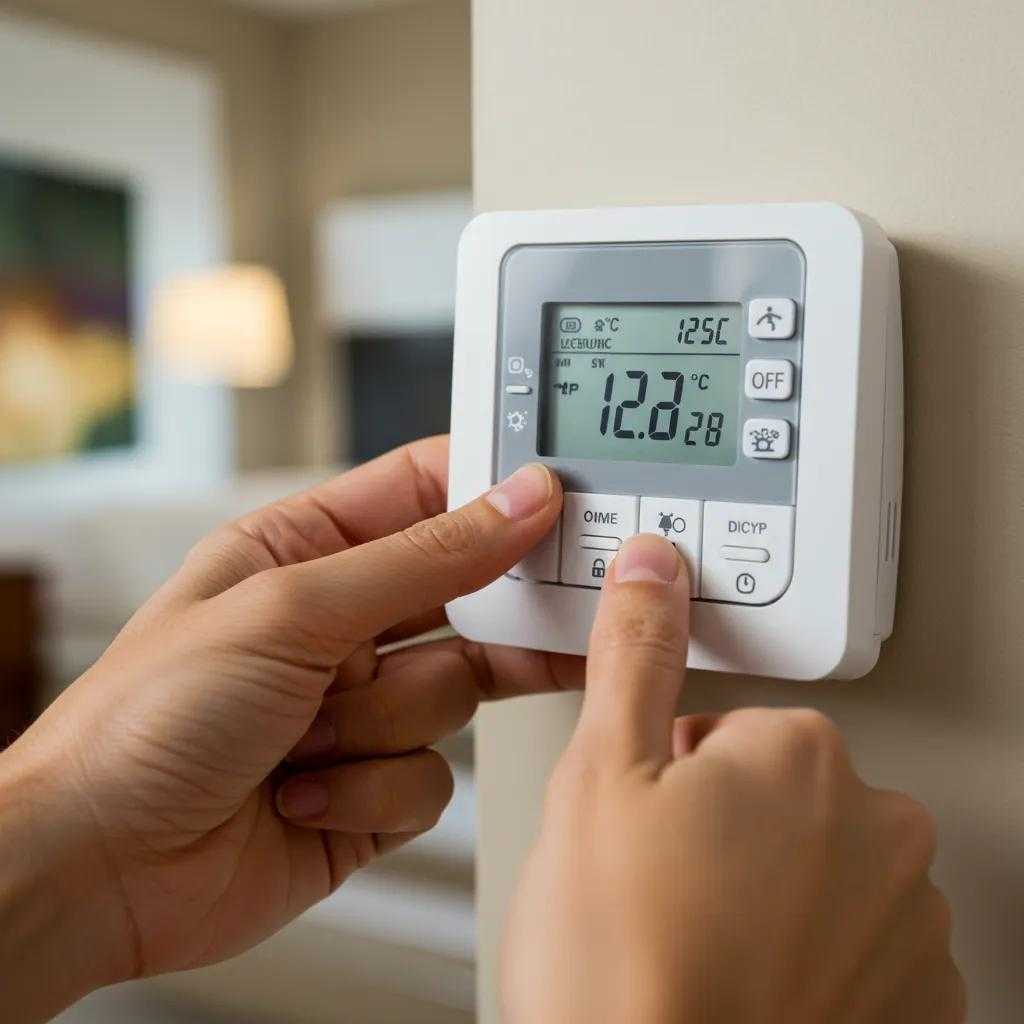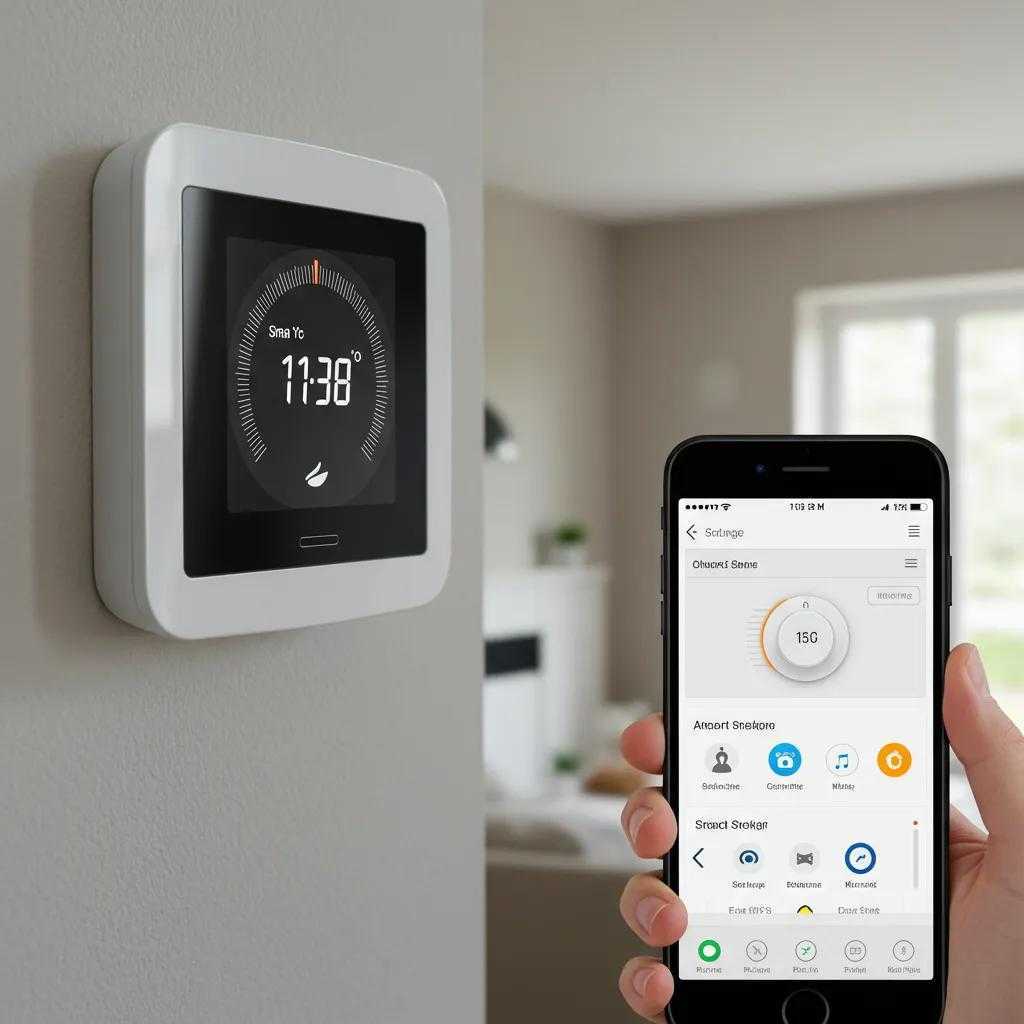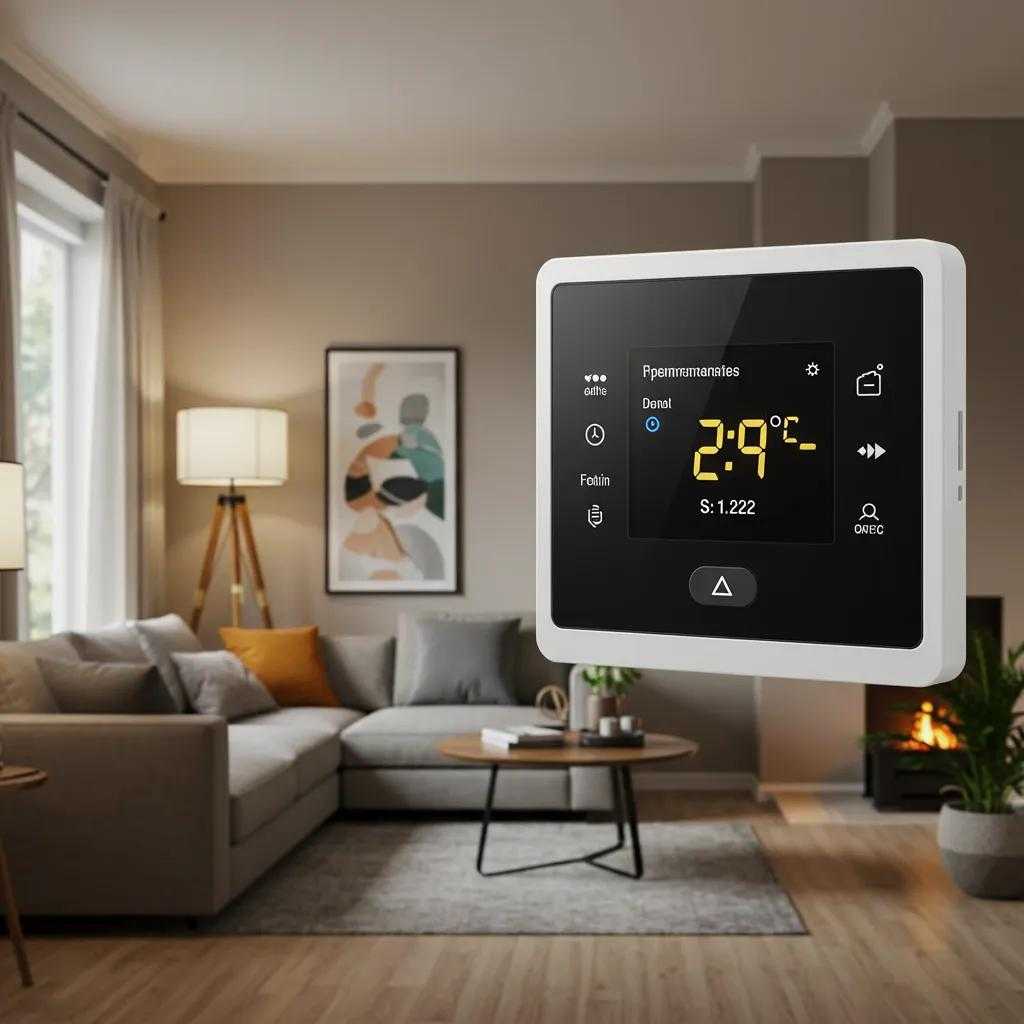Using Programmable Thermostats for Energy Savings: Benefits, Installation, and Smart Options
Are rising heating and cooling expenses cutting into your household budget? Programmable thermostats offer an energy-saving thermostat solution by automatically adjusting indoor temperatures to match daily routines and occupancy. In this guide, we define what programmable units are, explain how they reduce energy consumption, show step-by-step programming strategies, compare smart models, outline installation costs, troubleshoot common issues, situate thermostats in wider HVAC efficiency plans, and address homeowner questions. Drawing on Department of Energy data and expert insights from Priority Indoor Comfort, this article provides clear actions you can take today to lower utility bills, maintain consistent comfort, and upgrade home climate control.
What Are Programmable Thermostats and How Do They Save Energy?
Programmable thermostats are devices that control HVAC systems based on pre-set temperature schedules, reducing runtime when no one is home or during sleep hours. By setting back heating by 7–10°F for eight hours daily, homeowners can save up to 10 percent on annual heating and cooling costs through precise setbacks and dynamic scheduling. These units offer multiple program options—such as weekday/weekend or seven-day flexibility—to align temperature control with real-life occupancy patterns and weather variations.
| Thermostat Model | Typical Annual Savings | Mechanism |
|---|---|---|
| Standard 5-2 Programmable | 8–10 percent | Weekday/weekend temperature setback |
| 7-Day Programmable | 10–12 percent | Daily customized fluctuations |
| Touchscreen Programmable | 12–14 percent | Intuitive interface for fine tuning |
These figures demonstrate how scheduling and temperature setbacks translate into measurable utility bill relief. Understanding these savings leads directly into the best practices for programming your thermostat for maximum efficiency.
What Is a Programmable Thermostat?
A programmable thermostat is a temperature control device that allows homeowners to create heating and cooling schedules in advance. It regulates HVAC operation by switching system modes—heating, cooling, or off—according to user-defined time blocks. Through intuitive interfaces or digital displays, these devices reduce wasted runtime and maintain comfort when it matters most. For more information, check our blog.
How Do Programmable Thermostats Reduce Energy Consumption?
Programmable thermostats reduce energy use by enforcing temperature setbacks during unoccupied or sleeping hours, limiting unnecessary heating or cooling. They optimize cycle lengths, minimize short-cycling, and adapt to daily routines with automatic transitions. As a result, HVAC systems run when needed and conserve energy when the home is empty or occupants are resting.
What Are the Typical Energy Savings from Using Programmable Thermostats?
Homeowners can expect savings of 8–14 percent annually on heating and cooling bills with well-configured programmable thermostats. Real-world data shows that simple weekday/weekend schedules yield around 8 percent savings, while seven-day customized programming can boost reductions to over 12 percent. These consistent savings compound over multiple seasons, reducing overall utility expenses.
How Do Programmable Thermostats Impact Utility Bills?
By cutting HVAC runtime during off-peak occupancy, programmable thermostats lower monthly energy consumption and deliver clear financial benefits. For a home with a $200 monthly heating and cooling budget, a 10 percent savings equates to $20 less per month, or $240 annually. These savings help justify the initial investment in both the device and professional installation.
How to Program Your Thermostat for Maximum Energy Savings?

Programming a thermostat effectively combines optimal temperature setpoints with intelligent scheduling. First, identify your daily routine and align temperature changes around departures, arrivals, and sleep cycles. Then apply seasonal adjustments and temporary overrides judiciously to maintain efficiency without sacrificing comfort.
What Are the Best Temperature Settings for Energy Efficiency?
- 68°F during occupied heating hours
- 60–62°F during sleep or away periods in winter
- 78°F during occupied cooling hours
- 82–84°F during away periods in summer
These settings reduce HVAC load while preserving livable conditions.
Adjusting one degree of heating setpoint can change energy use by about 1–3 percent. Fine-tuning these levels through programmable schedules ensures maximum savings without noticeable comfort loss.
How to Set Daily and Weekly Thermostat Schedules?
Homeowners can choose between a 5-2 schedule—separate weekday and weekend settings—or a seven-day program for full flexibility. Follow these steps:
- Select program type (5-2 or 7-day) on the device menu.
- Set a morning temperature for wake-up times.
- Define a setback for work or school hours.
- Program a return-to-comfort period in the late afternoon.
- Schedule a nighttime setback.
This approach creates consistent temperature profiles that align with daily life and maximize setbacks when spaces are unused.
What Seasonal Programming Tips Improve Energy Savings?
Seasonal shifts call for adjusted setback degrees and schedule tweaks. In winter, extend morning pre-heat intervals by 15 minutes to offset heat-up time, while in summer, add a midday setback if occupants are away. Increasing setback ranges by 2°F during mild shoulder seasons can yield extra savings without affecting comfort during extreme weather. For more information, consider our heat pump services.
How Can Temporary Overrides Affect Energy Efficiency?
Temporary overrides let users make one-time adjustments but can drive up energy use if forgotten. Always revert to the programmed schedule after a manual change. Many programmable thermostats offer auto-recovery features to return to saved schedules, preserving efficiency even when homeowners adjust temperatures on the fly.
What Are the Benefits of Smart Thermostats Compared to Programmable Models?

Smart thermostats enhance programmable features with Wi-Fi connectivity, adaptive learning, geofencing, and remote control through mobile apps. They continuously analyze user behavior and local weather data to optimize comfort and efficiency without manual reprogramming.
What Advanced Features Do Smart Thermostats Offer?
- Learning algorithms that create schedules based on usage patterns
- Geofencing to adjust temperatures when residents leave or return
- Integration with voice assistants for hands-free control
- Real-time energy reports and system alerts
These capabilities automate efficiency and adapt to changing household routines.
How Do Smart Thermostats Enhance Energy Savings and Comfort?
By analyzing occupancy, weather, and historical usage, smart thermostats fine-tune HVAC cycles for maximum efficiency. They pre-heat or pre-cool homes precisely when needed, reducing wasted runtime and providing seamless comfort transitions. Occupancy sensing prevents heating or cooling empty spaces, boosting energy savings beyond basic scheduling.
Which Smart Thermostat Brands Are Most Energy Efficient?
| Brand | Claimed Savings | Unique Feature |
|---|---|---|
| Nest | 12 percent heating, 15 percent cooling | Learning schedule |
| Ecobee | Up to 26 percent total | Remote sensor integration |
| Honeywell | 10–12 percent overall | Flexible installation |
These values reflect manufacturer data and real homeowner experiences, with geofencing and ductless setups delivering the highest energy reductions.
How Do Smart Thermostats Integrate with Smart Home Systems?
Smart thermostats connect seamlessly with major ecosystems—voice assistants like Google Assistant and Amazon Alexa, and platforms such as Apple HomeKit. Integration enables unified control of HVAC alongside lighting, security, and other IoT devices, creating a cohesive smart home environment.
How Much Does Programmable and Smart Thermostat Installation Cost?
Thermostat installation costs vary based on device complexity and professional rates. Basic programmable units cost $80–$140 for the device plus $200–$300 total installed, while smart thermostats range from $100–$250 and $225–$400 installed. Labor rates for HVAC technicians typically fall between $50 and $150 per hour, with one- to two-hour installations common.
What Are the Typical Installation Costs for Programmable Thermostats?
Professional installation for a basic programmable thermostat averages $200–$300, covering device setup, wiring checks, and system calibration. This investment ensures safe connection to HVAC controls and maintains warranty coverage.
How Do Smart Thermostat Installation Costs Compare?
Smart thermostat installation costs range from $225–$400, reflecting more advanced wiring, compatibility checks with existing HVAC systems, and network configuration. Technicians verify Wi-Fi strength and secure firmware setup, which adds to labor time but guarantees reliable performance.
Why Choose Professional Installation for Thermostats?
Expert installation reduces risks of wiring errors, improves system reliability, and preserves equipment warranties. Professionals also provide on-site testing, ensuring accurate temperature readings and optimal system integration, which maximizes energy savings potential.
Are There Local Rebates or Incentives for Energy Efficient Thermostats?
Many utility programs and ENERGY STAR® initiatives offer rebates of $25–$50 for qualifying smart thermostats. Homeowners should check regional incentives to offset device and installation expenses, accelerating return on investment.
How to Troubleshoot Common Programmable Thermostat Problems?
When programmable thermostats malfunction, simple checks often restore functionality before calling a technician. Inspect power sources, wiring integrity, and software settings to diagnose frequent issues.
What Causes Thermostat Power and Connectivity Issues?
Power failures usually stem from dead batteries, tripped HVAC circuit breakers, or loose wiring. Replacing batteries, resetting breakers, and verifying terminal connections can resolve most power interruptions.
How to Fix Temperature Inaccuracy or Erratic Behavior?
Calibration drift and sensor faults cause inaccurate readings. Re-calibrate the thermostat following manufacturer instructions or replace aging units. Cleaning sensors and ensuring level mounting can prevent erratic cycling.
When Should You Call a Professional HVAC Technician?
If troubleshooting steps fail or if wiring complications arise, schedule service with Priority Indoor Comfort. Technicians can perform advanced diagnostics, update control firmware, and recommend replacement for outdated thermostats.
How Do Programmable Thermostats Fit Into Broader HVAC Energy Saving Strategies?
Programmable thermostats deliver significant savings, but they perform best alongside comprehensive home efficiency measures. Improving insulation, sealing ductwork, and regular HVAC maintenance complement thermostat-based controls for maximum impact.
What Home Energy Efficiency Measures Complement Thermostat Use?
Effective strategies include:
- Upgrading insulation in attics and walls
- Sealing air leaks around doors and windows
- Installing high-efficiency air filters and maintaining ductwork
How Does Regular HVAC Maintenance Improve Thermostat Performance?
Routine tune-ups—filter changes, refrigerant checks, and coil cleanings—help HVAC systems respond accurately to thermostat commands. Well-maintained equipment cycles efficiently, amplifying the energy savings set by programmable schedules.
What Role Do Heat Pumps and Zoned HVAC Systems Play in Energy Savings?
Heat pumps deliver efficient heating and cooling by transferring heat rather than generating it, while zoning divides homes into independently controlled areas. Together with programmable controls, these advanced systems optimize comfort and minimize energy use in different living spaces.
What Are the Most Frequently Asked Questions About Programmable Thermostats and Energy Savings?
Homeowners often seek clarity on savings potential, investment value, and operational differences between thermostat types. Addressing these common concerns can guide informed decisions and set realistic expectations.
How Much Energy Can a Programmable Thermostat Save?
Programmable thermostats typically save 8–14 percent on annual heating and cooling costs by enforcing temperature setbacks during unoccupied periods and sleep hours.
Are Programmable Thermostats Worth the Investment?
Yes, the initial outlay for a programmable thermostat and professional installation is usually recouped within two to three years through utility bill reductions.
What Is the Difference Between Programmable and Smart Thermostats?
Programmable models rely on manual schedule programming, while smart thermostats adapt automatically by learning usage patterns, leveraging geofencing, and providing remote mobile control.
How Do I Program My Thermostat for Maximum Savings?
Maximize savings by setting conservative setback ranges—around 7–10°F—and aligning temperature changes to your daily routine using 5-2 or 7-day schedules.
Do Smart Thermostats Really Save Money?
Evidence shows smart thermostats can save an additional 2–6 percent beyond programmable models through adaptive algorithms, occupancy sensing, and real-time weather integration.
Priority Indoor Comfort specializes in both programmable and smart thermostat consultation, installation, and support to help homeowners realize these energy savings and comfort gains. Their expert technicians ensure seamless integration and efficient operation of your HVAC controls.
Lowering energy bills and improving home comfort start with intelligent temperature management. By adopting programmable or smart thermostats, following optimal programming practices, and integrating these devices into a complete HVAC efficiency plan, homeowners can achieve significant savings and reliable indoor comfort. For personalized guidance and professional installation, contact Priority Indoor Comfort to schedule your thermostat upgrade and begin reducing utility expenses today.
Conclusion
Implementing programmable or smart thermostats can lead to substantial energy savings and enhanced home comfort by optimizing HVAC performance. By understanding and applying effective programming strategies, homeowners can significantly reduce their utility bills while maintaining a pleasant living environment. For tailored advice and expert installation, reach out to Priority Indoor Comfort today. Start your journey towards smarter energy management and enjoy the benefits of a more efficient home.

